Author: Matt Del Fiacco
Whether a homebrewer entering their beer in a competition or a professional brewer distributing their product to market, flavor stability has long been a challenge faced by both. When it comes to beer staling, the most commonly cited culprit is oxidation, the reduction of which has led to the development of sophisticated mechanical solutions involving the packaging and shipping process.
BrewTan B is a chelating agent said to improve flavor stability over time due to its ability to inhibit Fenton reactions that lead to oxidation in beer. Our initial xBmt on this product was completed back in February 2018 and showed that participants could reliably distinguish a beer made with BrewTan B from one made without it, despite the beers being relatively fresh.
Given claims that the use of BrewTan B improves shelf stability, I was curious how the beers would fare after a bit of time and disconnected them for a period of aging. After 6 months, the beers were put back on tap and ready for another round of tasters!
| PURPOSE |
To evaluate the differences between a Pale Ale treated with Brewtan B during both the mash and the boil and one that was untreated after 6 months of aging.
| METHODS |
Seeing as hoppier styles tend to lose their freshness fairly quickly, and having recently brewed more malt-forward beers, I went with a classic American Pale Ale for this xBmt.
Chillax Pale Ale
Recipe Details
| Batch Size | Boil Time | IBU | SRM | Est. OG | Est. FG | ABV |
|---|---|---|---|---|---|---|
| 4.5 gal | 60 min | 36.1 IBUs | 5.2 SRM | 1.048 | 1.013 | 4.6 % |
| Actuals | 1.048 | 1.013 | 4.6 % | |||
Fermentables
| Name | Amount | % |
|---|---|---|
| Pale Malt (Weyermann) | 8 lbs | 96.24 |
| Munich I (Weyermann) | 5 oz | 3.76 |
Hops
| Name | Amount | Time | Use | Form | Alpha % |
|---|---|---|---|---|---|
| Caliente | 4 g | 60 min | Boil | Pellet | 16.8 |
| Caliente | 9 g | 20 min | Boil | Pellet | 16.8 |
| Caliente | 22 g | 5 min | Boil | Pellet | 16.8 |
| Caliente | 75 g | 3 days | Dry Hop | Pellet | 16.8 |
Yeast
| Name | Lab | Attenuation | Temperature |
|---|---|---|---|
| Flagship (A07) | Imperial Yeast | 75% | 60°F - 72°F |
Notes
| Water Profile: Ca 80 | Mg 2 | Na 10 | SO4 125 | Cl 62 |
Download
| Download this recipe's BeerXML file |
A few days before brew day, I spun up a starter of Imperial Yeast A07 Flagship, a strain not particularly known for high flocculation.
I kicked off my brew day by gathering my water and turning the temperature controllers on my systems on to heat the liquor.
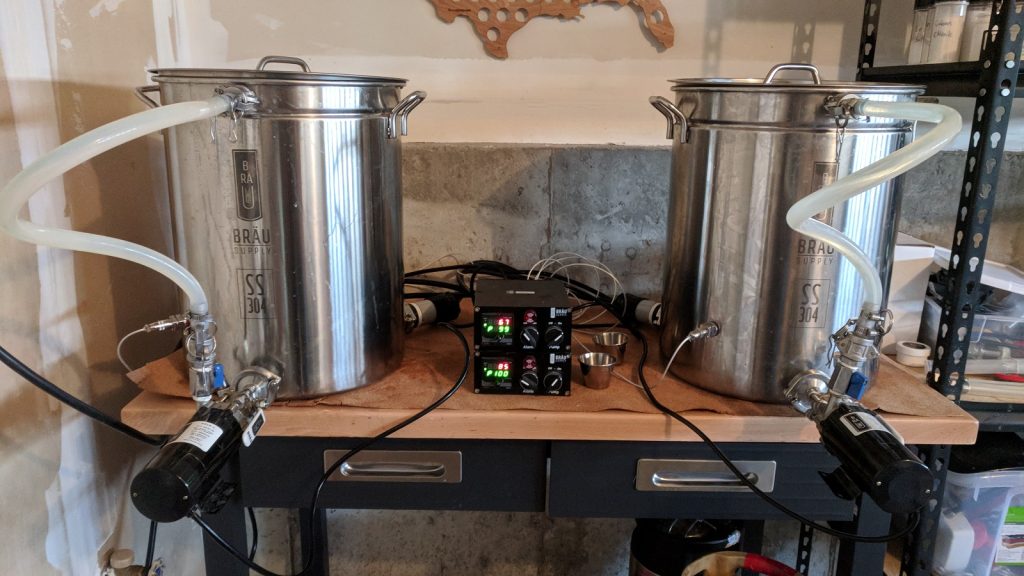
I adjusted the water profile of both batches then weighed out and milled the grain.
I mashed in the standard batch before focusing on the BrewTan B batch. There’s some variance on the recommended amount of BrewTan B, but for the purposes of the xBmt, I thought it best to stick with middle range of the manufacturer recommendation. After measuring it out, I dissolved the BrewTan B in some water and added it to the strike water.
When the BrewTan B was fully incorporated, I mashed in. Both mashes were continuously recirculated and they were held at the same temperature.
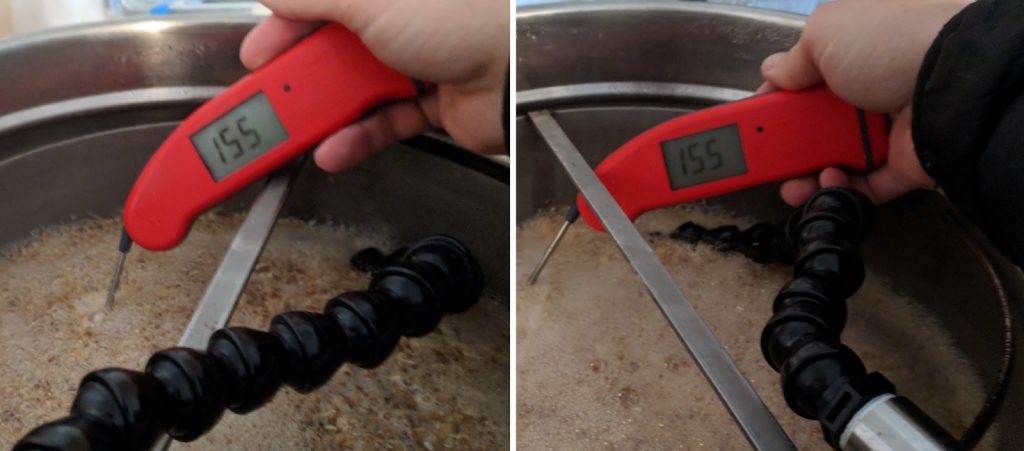
I noticed the foam produced by the agitation from recirculation was more stable on in the BrewTan B mash.
After each 60 minute mash, I removed the grains and began heating the worts, measuring out the hops for both batches while waiting to reach a boil.
Since BrewTan B is said to improve beer clarity, I left out my usual addition of Whilflocc during the 60 minute boil. With 5 minutes left in the boil, I dissolved another 1 gram of BrewTan B in water then added to its respective wort. It seemed the foam on the BrewTan B batch had a subtle pink shade to it, unlike the standard wort.
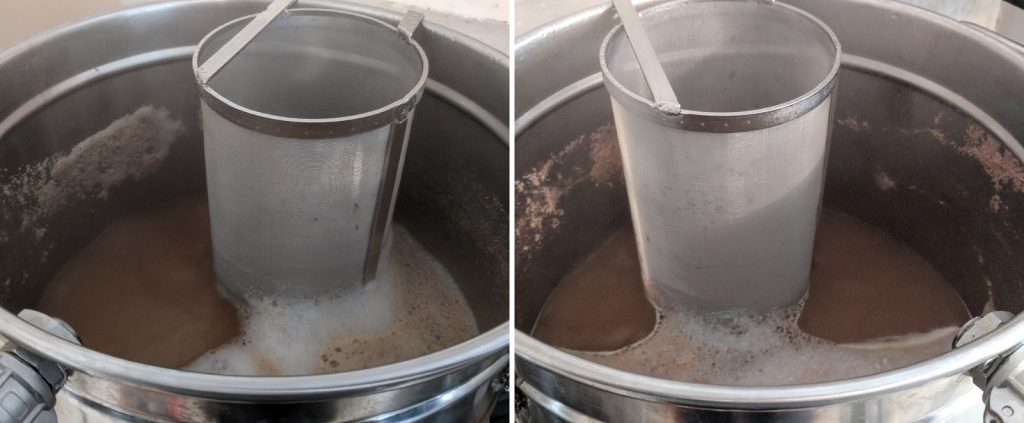
Once each boil was complete, I quickly chilled the wort with my CFC, collecting identical amounts of chilled wort from either batch in glass carboys.
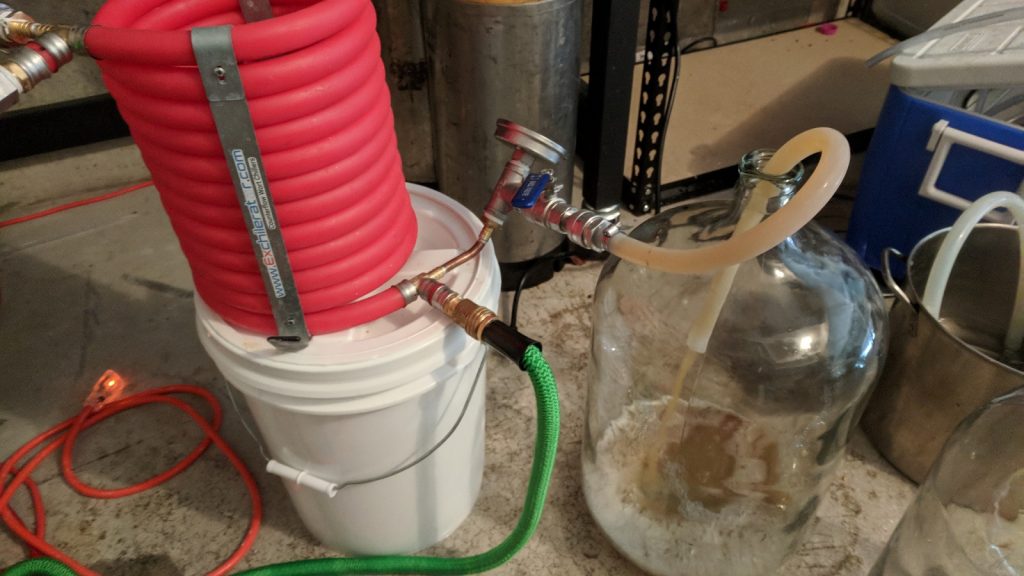
I noticed the trub in the bottom of either kettle look quite different, almost as if the BrewTan B encouraged more break formation.
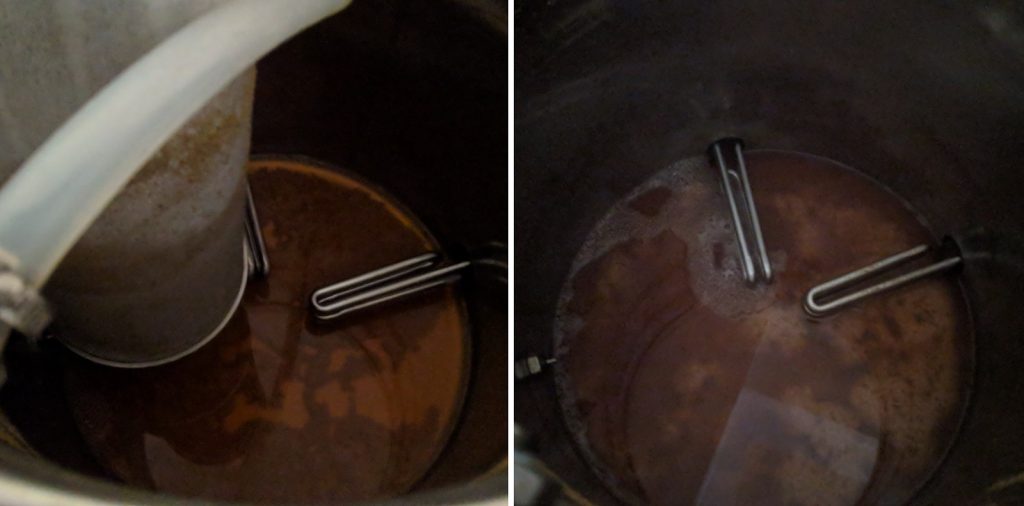
Hydrometer measurements showed the BrewTan B wort was slightly higher than the standard wort.
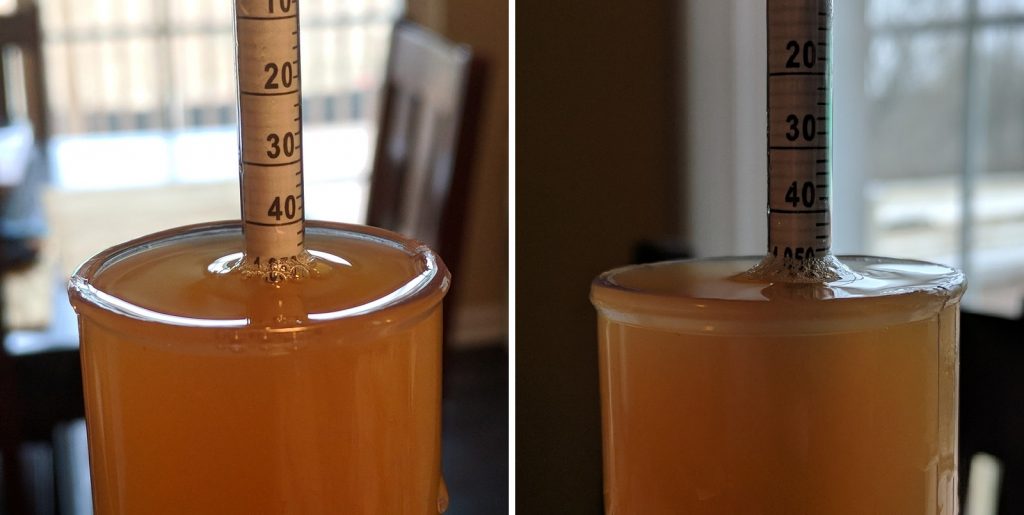
I let the worts sit in my chamber until they cooled to my target pitching temperature of 64°F/18°C before pitching the yeast. Signs of activity were observed just 7 hours later.
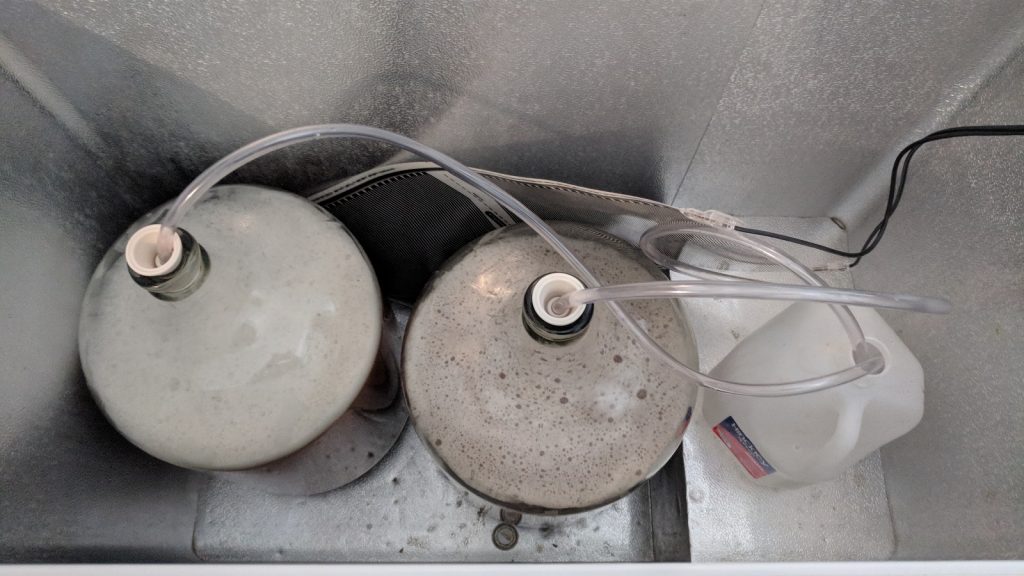
The beers fermented for a week before I added the dry hop additions, after which I left them alone for another 3 days before cold crashing. Hydrometer measurements at this time confirmed both beers had reached the same FG.
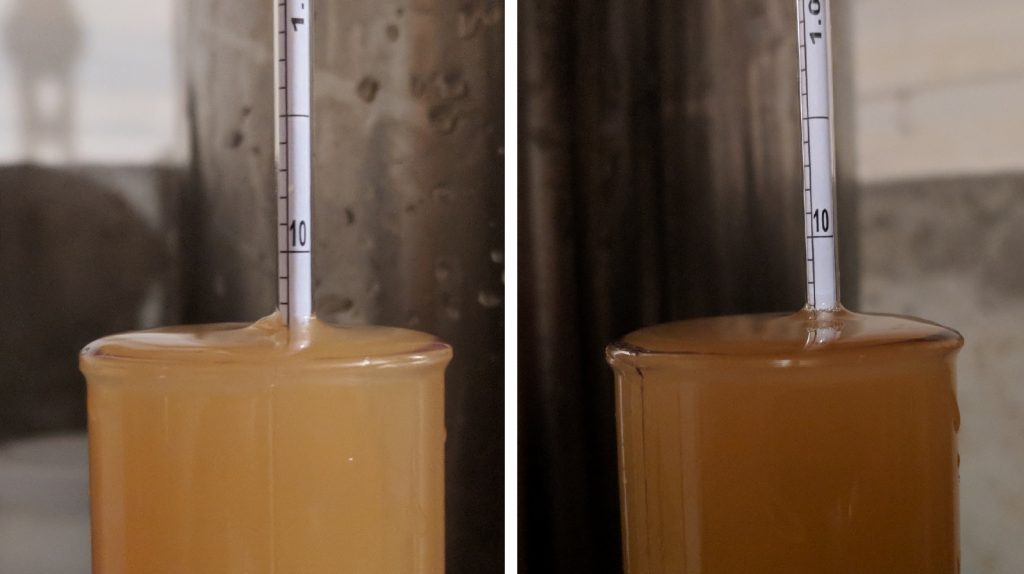
When it came time to keg, I noticed the standard beer had a touch more trub than the BrewTan B beer, which had a slightly lighter colored kräusen ring.
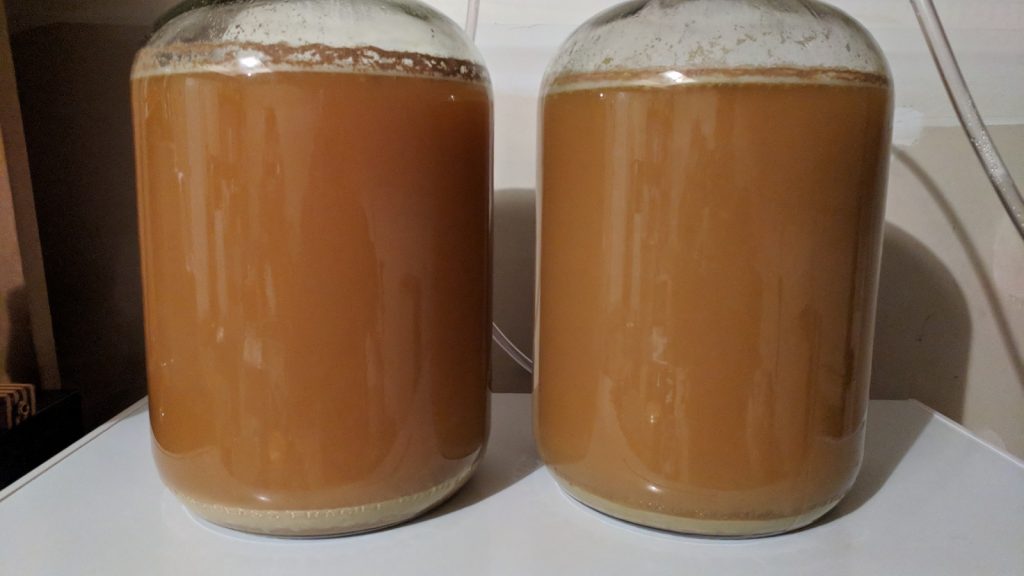
I transferred each batch to sanitized and CO2 purged kegs.
The beers were placed in my kegerator and burst carbonated. Curiously, even after a week in the cool environment, both beers maintained a noticeable haze.
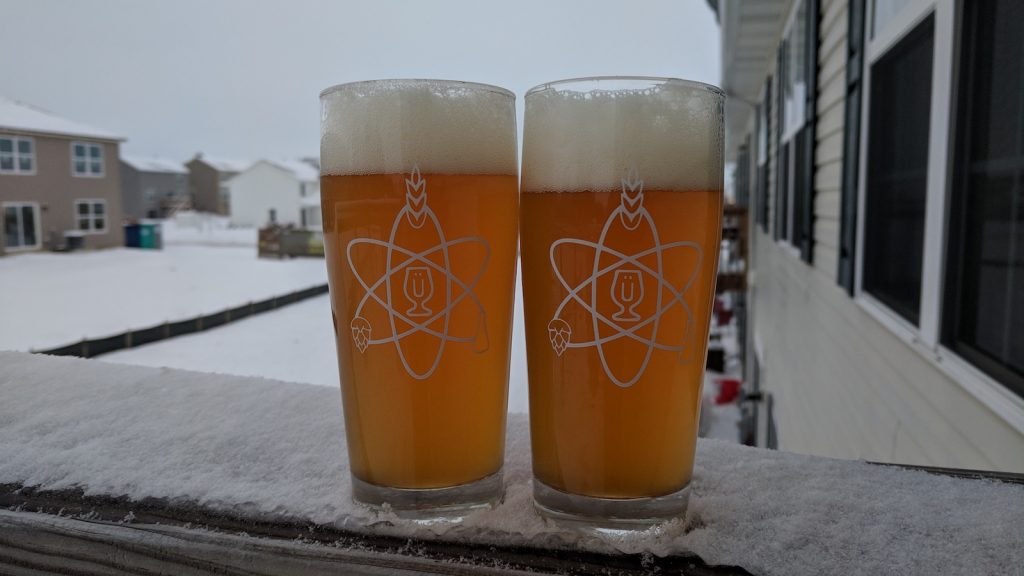
Following the first round of data collection, I disconnect the kegs from gas and let them sit for a period of aging.
After 6 months, both kegs were put back on tap in preparation for a second round of data collection. While both beers were slightly clearer than before, and the BrewTan B one a bit more so than the untreated version, neither had dropped bright.
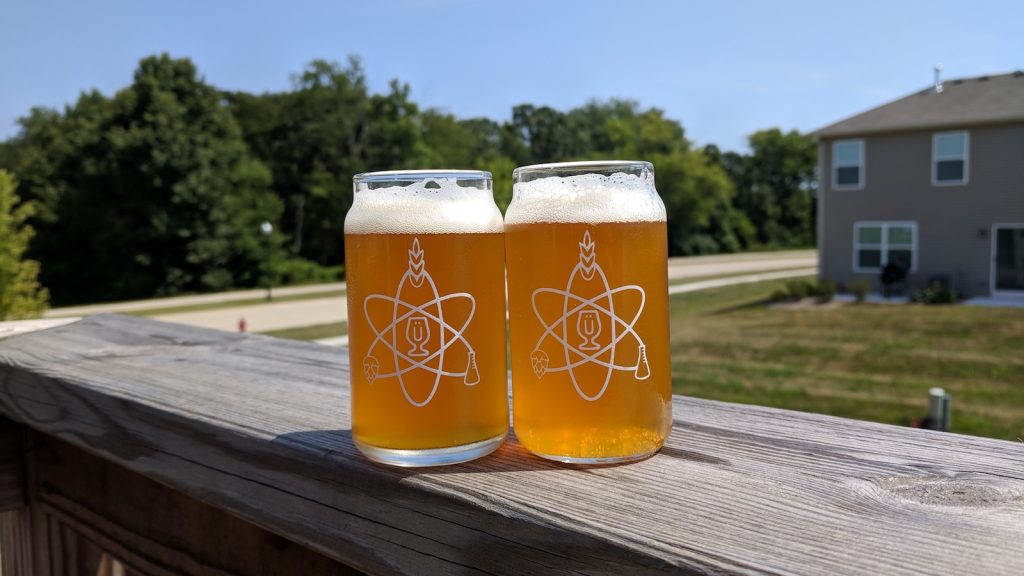
| RESULTS |
 Huge thanks to the Plainfield Ale and Lager Enthusiasts for allowing me to collect data for this xBmt at a recent club meeting! A total of 21 people of varying levels of experience participated in this xBmt. Each participant was served 2 samples of the BrewTan B beer and 1 sample of the standard beer in different colored opaque cups then asked to identify the sample that was unique. At this sample size, 12 tasters (p<0.05) would have had to select the unique sample in order to reach statistical significance, though only 8 people were correct (p=0.40), indicating participants were unable to reliably distinguish a Pale Ale treated with BrewTan B in both the mash and the boil from one that was untreated after 6 months of aging.
Huge thanks to the Plainfield Ale and Lager Enthusiasts for allowing me to collect data for this xBmt at a recent club meeting! A total of 21 people of varying levels of experience participated in this xBmt. Each participant was served 2 samples of the BrewTan B beer and 1 sample of the standard beer in different colored opaque cups then asked to identify the sample that was unique. At this sample size, 12 tasters (p<0.05) would have had to select the unique sample in order to reach statistical significance, though only 8 people were correct (p=0.40), indicating participants were unable to reliably distinguish a Pale Ale treated with BrewTan B in both the mash and the boil from one that was untreated after 6 months of aging.
My Impressions: My performance on multiple triangle tests was similar to the first round– I couldn’t distinguish the odd beer out at all. I perceived the beers as being identical in all respects and thought both tasted stale.
| DISCUSSION |
BrewTan B is said to have an impact on two main things– shelf-stability and clarity. While tasters were able to reliably tell the beers apart in the initial xBmt, neither ever dropped clear, something I thought might best be explained by the fact they were still rather fresh. Curiously, after 6 months of aging, the beers were still noticeably hazy. I’m not entirely sure what the culprit is, as neither beer showed any signs of contamination and I brewed them using my standard process. Regardless, participants don’t rely on appearance when doing the triangle test, but aroma, flavor, and mouthfeel.
Given the significant results of the original xBmt, I fully expected the differences between these beers to become even more pronounced over time. However, tasters could not reliably distinguish the beer made with BrewTan B from the one made without it, a finding that suggests both were impacted equally by time in such a way that any initial differences were erased. Interesting for a product intended to improve shelf-stability.
Since brewing these beers 6 months ago, I’ve used BrewTan B numerous times, in part because I have it lying around, but also because the results of the first xBmt seemed to suggest it did something to beer. Now I’m not sure. To my tastes, both of the aged beers tasted similarly stale. My subsequent batches have come out clear, though they admittedly haven’t been comparative in nature, so perhaps it wasn’t due to the BrewTan B. At this point, I plan to continue using and exploring the impact of this product, as I still think there’s a ton to learn.
If you have any thoughts about this xBmt, please do not hesitate to share in the comments section below!
Support Brülosophy In Style!
All designs are available in various colors and sizes on Amazon!
Follow Brülosophy on:
FACEBOOK | TWITTER | INSTAGRAM
If you enjoy this stuff and feel compelled to support Brulosophy.com, please check out the Support page for details on how you can very easily do so. Thanks!


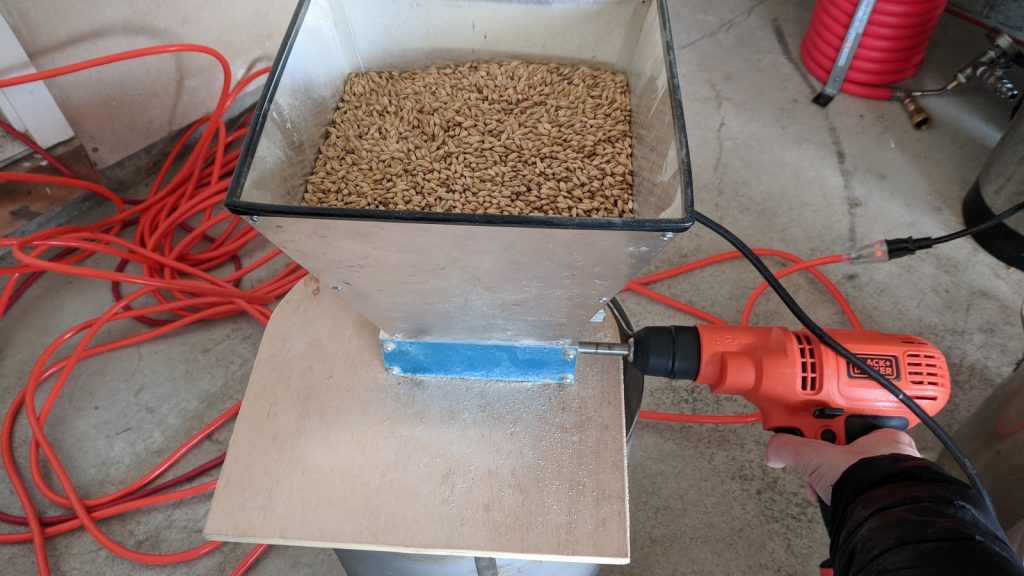
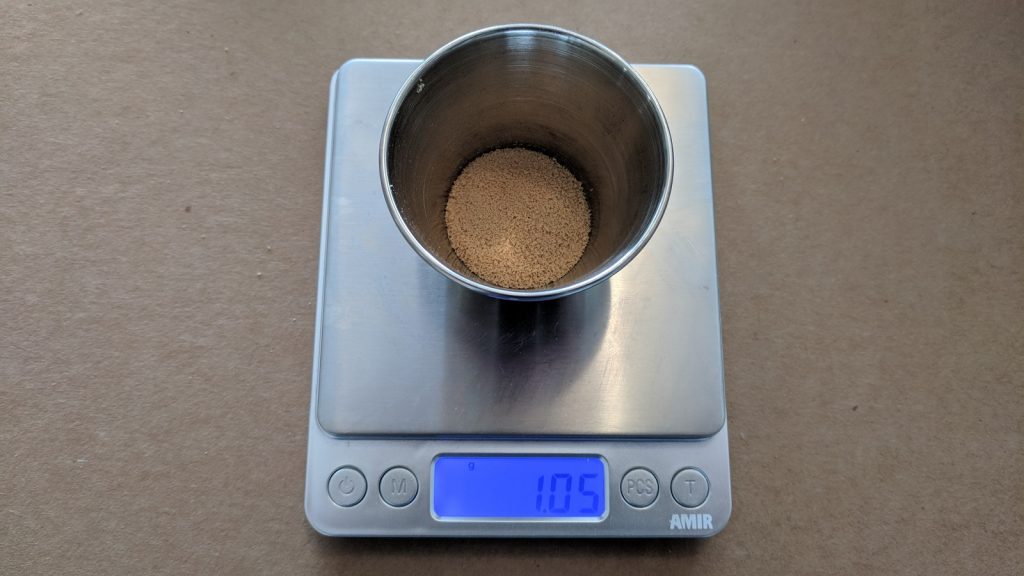
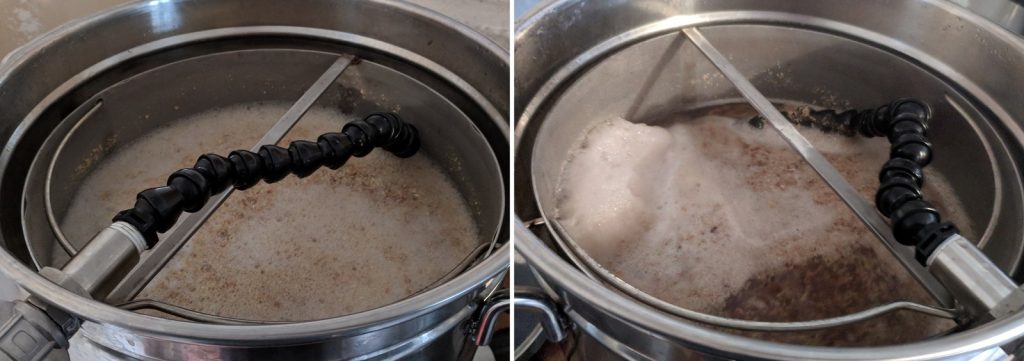
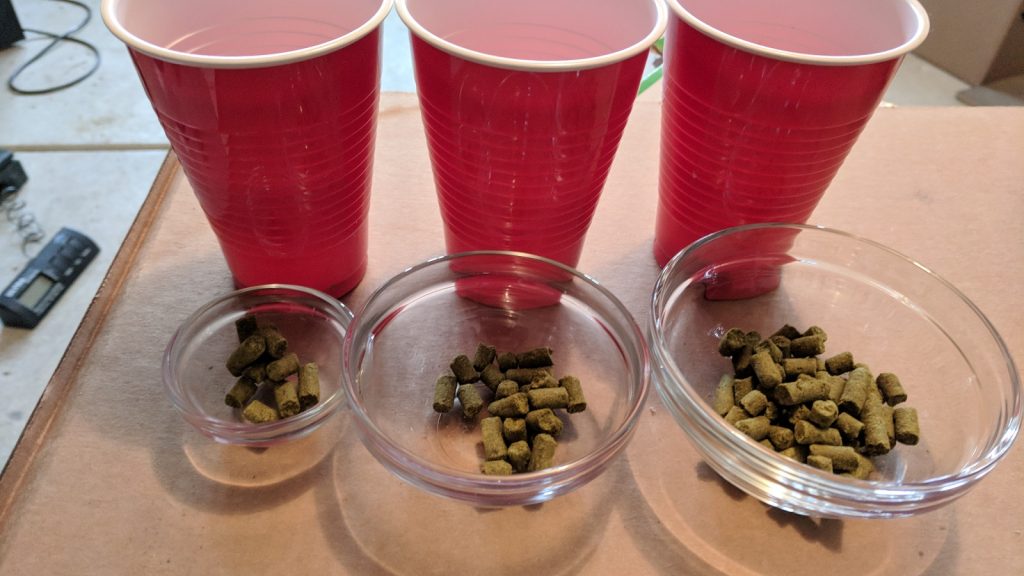
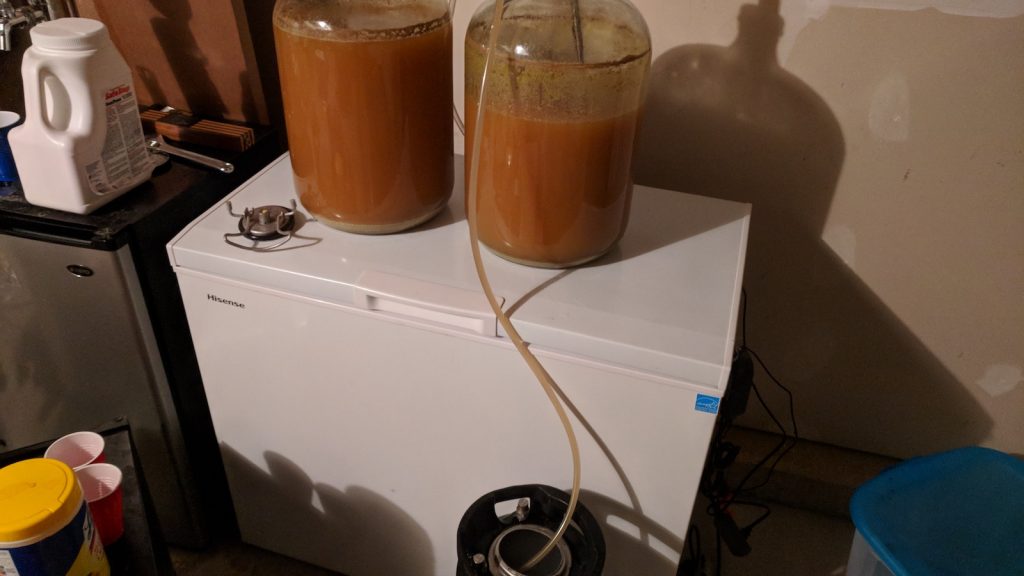
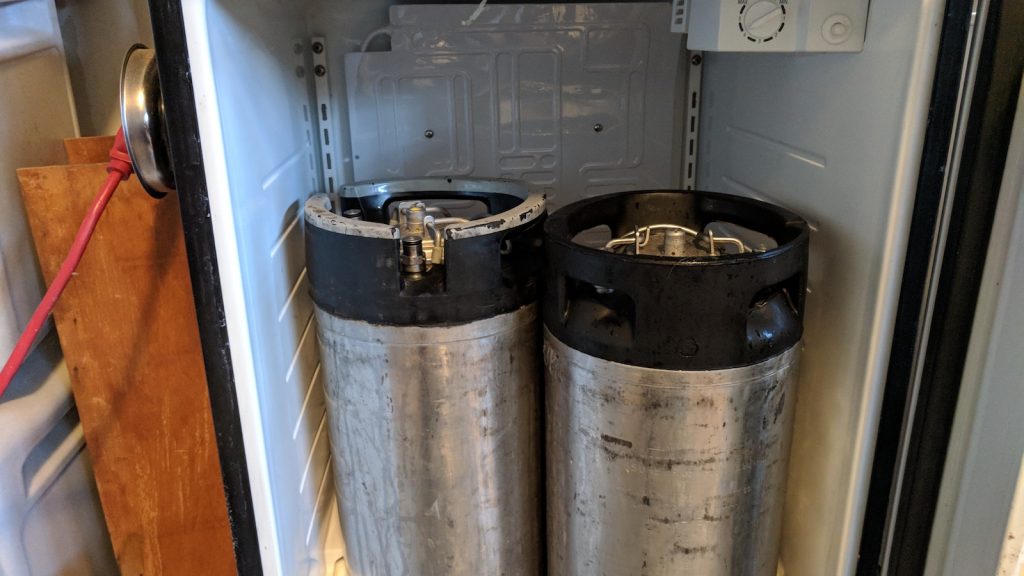










6 thoughts on “exBEERiment | Impact Adding BrewTan B To The Mash Has On American Pale Ale”
On the clarity question, your description of the brew process says “Since BrewTan B is said to improve beer clarity, I left out my usual addition of Whilflocc during the 60 minute boil” – It would seems as though another conclusion of this exBEERiment would be that at a mid range dose of BrewTan, it does not appreciably improve clarity.
One question, when you disconnected “…the kegs from gas and let them sit for a period of aging”, did you keep them chilled or did you let them warm up to ambient temps?
I also wondered what the storage temp was.
I would put the haze down to the heavy dry hopping. It’s hard to make clear beer if you dry hop but don’t fine. Heavy dry hopping can also cause faster staling in my experience – best to drink the beer fresh.
Interesting article, this is something we have thought about experimenting with our beer. We like to age are beer to see how the tastes change, knowing that there is a product that is supposed to add to shelf like is very interesting. I am excited to see if there were any differences after a year after the brew.
Not to beat a dead horse, but with the Brewtan B, if it improves the shelf stability, it may only improve it slightly, like by 50%. Instead of waiting 6 months to try again, has an exbeeriment been done tasting it month after month, rather than waiting an extremely long time where both the “normal” and the Brewtan B beers would have gone past their respective shelf lives?
Just listened to this episode of the podcast, and I’ve got to wonder if BrewTan B has a firm threshold/hard cap for effectiveness which was reached immediately, then over time any oxidation took place at the same rate as the non-BrewTan B batch. I then wonder if dosage size would realistically have any effect. Either way I’m keen to try BrewTan B!